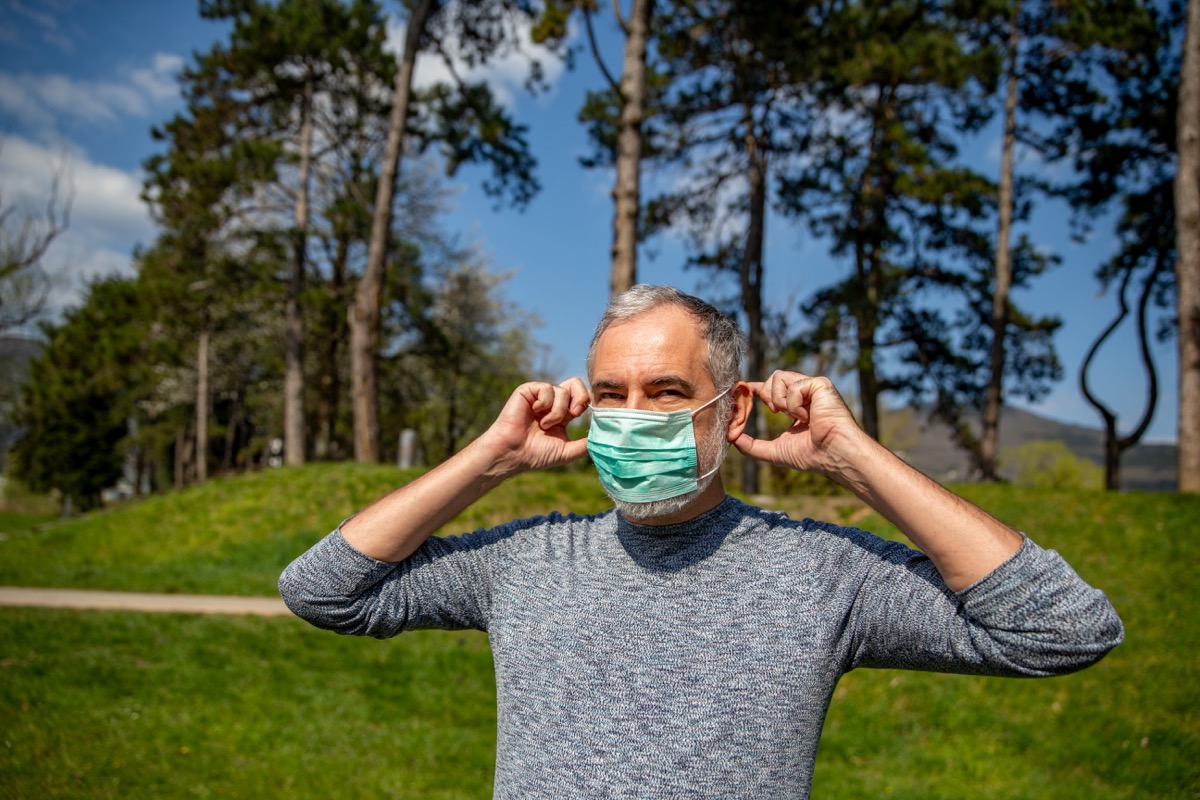According to a recent study published in the journal Environmental Research, certain atmospheric conditions can make the spread of coronavirus outside a likely event. Using meteorological data and reported case information from New York City from March through April, a computer model was used to simulate particles being expelled from an infected person’s cough or sneeze. The results showed that when there was a combination of warmer or slightly cool air temperatures with low wind speed and weak turbulence, the amount of time the virus could stay airborne drastically increased. In some cases, it stayed afloat for 30 minutes and could travel upwards of a mile. “This work is further evidence that outdoor air cannot dilute the virus particles, and there is strong evidence the spatial spread across states is linked to airborne transmission,” study author Kiran Bhaganagar, associate professor of mechanical engineering at the University of Texas at San Antonio, said in a statement.ae0fcc31ae342fd3a1346ebb1f342fcb She also suggested that the recommended six feet for social distancing may not be enough to keep the virus from spreading in public, saying that the use of masks even outdoors may be beneficial. Previous research has also shown that humidity levels can affect COVID’s ability to spread. In August, a study published in the journal Transboundary and Emerging Diseases found that there is a direct correlation with a drop in humidity and an increase in community transmission of COVID-19. Results showed that just a one percent drop in relative humidity could increase COVID cases by up to 8 percent, and a 10 percent drop in humidity would double the number of coronavirus cases in any given area. Another recent study published in the journal Physics of Fluids found that potentially COVID-contaminated respiratory droplets can live up to 23 times longer in high humidity. “When the humidity is lower, the air is drier and it makes the aerosols smaller,” the first study’s author, Michael Ward, PhD, an epidemiologist at the University of Sydney, said in a statement. “When you sneeze and cough, those smaller infectious aerosols can stay suspended in the air for longer. That increases the exposure for other people.” RELATED: For more up-to-date information, sign up for our daily newsletter. While much research has been done on the likelihood of COVID spreading indoors, there have been very few studies that focus on its ability to do so outside. However, one study from Japan, which has not yet been peer reviewed, found that an infected patient was almost 20 times more likely to spread the virus to someone else when they were indoors as opposed to outdoors. Still, other scientists point out that the chance for COVID to spread outdoors might hinge on multiple conditions. “Outside, things like sunlight, wind, rain, ambient temperature, and humidity can affect virus infectivity and transmissibility,” Angela Rasmussen, MD, a virologist at Columbia University, told Vox. “So while we can’t say there’s zero risk, it’s likely low unless you are engaging in activities as part of a large crowd—such as a protest.” Other experts also warn that outdoor transmission isn’t as impossible as many believe it is. “I think people hear that it’s outdoors and think everything is fine,” Linsey Marr, PhD, an engineering professor and aerosol scientist at Virginia Tech, told The New York Times in July of outdoor gatherings. “But it should be outdoors with distancing. If you have an outdoor gathering with a lot of people talking, you stand close. It’s loud, so you talk louder.” And that, of course, spreads more droplets. And for more on that, find out why The Way Americans Talk May Have Made COVID So Much Worse, according to science.
